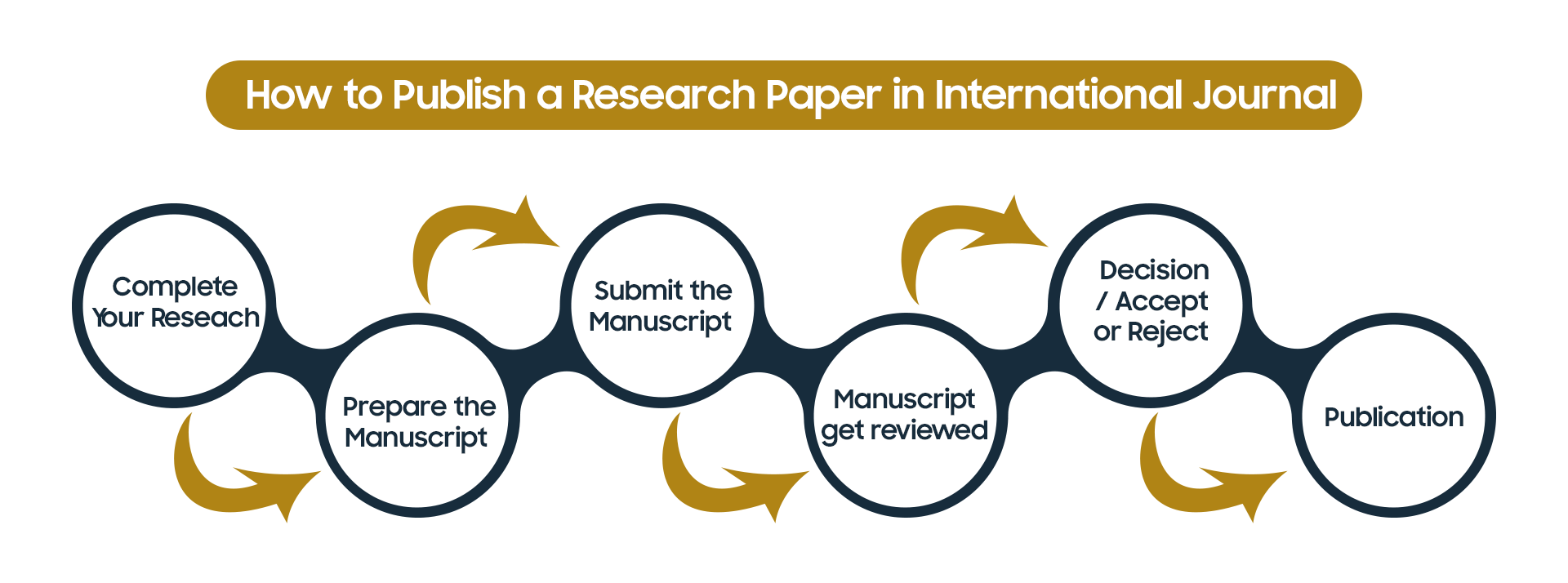Tips to Publish Your Research Paper Successfully|2025
/in General Articles /by BesttutorDiscover tips to publish your research paper successfully. Learn strategies for selecting journals, writing a compelling manuscript, and navigating the submission process to increase your chances of publication.
Publishing a research paper is a significant milestone in an academic journey, and it plays a crucial role in advancing knowledge in a particular field. For students, the process of publishing a research paper can seem daunting, especially when they are unsure of where to begin, how to navigate the complexities of the process, or how to get their work into a reputable journal.
The following guide provides a comprehensive overview of how students can publish their research paper successfully. It includes essential tips on writing, submitting, and promoting research, as well as practical advice for publishing in reputable journals, especially for those looking to publish for free or without the assistance of a professor.
Table of Contents
ToggleUnderstand the Importance of Publishing Your Research Paper
Before delving into the technicalities of how to publish your research paper, it’s important to understand why publishing your research is crucial. Research papers contribute to the academic community by adding new knowledge, ideas, or perspectives to existing literature. Publishing also helps in:
- Building credibility and academic reputation: Getting your paper published establishes you as an authority in your field.
- Advancing career opportunities: Publication increases your visibility in academia, making you a more attractive candidate for scholarships, research positions, and future opportunities.
- Contributing to your field of study: Your research can potentially influence policy, guide future research, or spark innovation.
By publishing, students can take ownership of their ideas and contribute meaningfully to their academic disciplines.
How to Publish a Research Paper for Students
Publishing a research paper as a student can seem overwhelming, but it is possible with the right approach. Below are several tips on how to approach the publishing process:
Select a Suitable Topic
The first step is choosing a research topic that is both interesting and viable. A good research paper focuses on an area that is under-explored or offers a new perspective on an existing issue. Make sure your topic aligns with the field of study you’re pursuing, and verify that enough resources are available to back your research. Additionally, consider the following:
- Relevance: Make sure your topic is relevant to current discussions in your field.
- Scope: The topic should neither be too broad nor too narrow.
- Novelty: Ensure that your research brings something new or insightful to the table.
Conduct Thorough Research
Before you start writing, ensure that your research is thorough and well-documented. Use credible sources such as peer-reviewed journals, books, and reputable websites. Keep track of your references carefully to avoid plagiarism and ensure you can properly cite sources when writing your paper.
Write a Strong Research Paper
Writing a research paper is an involved process. A typical research paper includes the following sections:
- Abstract: A concise summary of the research, including its aims, methodology, and findings.
- Introduction: The background of the study, research questions, and hypothesis.
- Literature Review: A review of existing research on the topic and the theoretical framework for your study.
- Methodology: A description of the research methods, techniques, and data collection procedures.
- Results and Discussion: The presentation of your findings, followed by an analysis of the results and their implications.
- Conclusion: A summary of the findings and suggestions for future research.
Ensure that your writing is clear, logical, and adheres to academic standards. Proofreading and editing are crucial to ensure that your research paper is free from errors and communicates your ideas effectively.
How to Publish a Research Paper for Free
For many students, finding a way to publish their research without paying for expensive journal fees is essential. Thankfully, there are several ways to publish research for free:
Look for Open Access Journals
Open-access journals are publications that allow you to publish your research without paying any fees. These journals make research freely available to the public and typically do not charge authors submission fees. Some well-known open-access journals include:
- PLOS ONE: An interdisciplinary journal that offers free access to research in all scientific fields.
- Directory of Open Access Journals (DOAJ): A directory that lists thousands of reputable open-access journals.
When submitting to these journals, be mindful of their submission guidelines, which may include formatting, word count, and referencing style.
Consider University-Based Journals
Many universities have their own academic journals that publish research papers written by students and faculty members. These journals may offer free publishing services or low-cost options. Check with your department or university to see if they have any publication opportunities.
Use Preprint Archives
A preprint is a version of a research paper that is made publicly available before being formally peer-reviewed. Preprint servers allow researchers to share their findings early in the process. Many preprint servers do not charge publication fees and can be a useful resource for students looking to publish their research papers for free. Popular preprint archives include:
- arXiv: A repository for papers in fields such as physics, computer science, and mathematics.
- bioRxiv: A preprint server for biology research.
How to Write a Research Paper for Journal Publication PDF
Once you’ve written your research paper, the next step is to prepare it for submission to a journal. Most journals will require you to submit your manuscript in a specific format. Here are some tips for submitting your research paper:
Review Submission Guidelines
Each journal has specific submission guidelines that must be followed. These guidelines can include details about formatting, referencing style, and document structure. Ensure that your manuscript adheres to these guidelines to increase your chances of acceptance. Common formatting requirements include:
- Title and abstract with specific word limits.
- Margins, fonts, and line spacing specifications.
- Reference style (e.g., APA, MLA, Chicago, etc.).
Prepare Your Manuscript
Ensure that your manuscript is polished and free from errors. If the journal requires the manuscript in PDF format, use a professional tool to convert it to PDF once it’s formatted. Also, keep in mind the importance of including the following when submitting your paper:
- Cover letter: A brief letter introducing your research and explaining why it is suitable for the journal.
- Copyright transfer form: Some journals may require authors to sign a copyright transfer agreement when submitting their papers.
Peer Review Process
Once your paper is submitted, it will likely undergo a peer review process. This involves experts in the field reviewing your work for quality, accuracy, and originality. Be prepared to make revisions based on feedback. The peer-review process can take weeks or months, so patience is essential.
How to Publish a Research Paper in an International Journal
Publishing in an international journal can give your research wider exposure and increase its impact. Here are some tips for successfully publishing in international journals:
Choose a Reputable Journal
It is important to choose a reputable journal with an international reach. Look for journals that have a strong impact factor, as this indicates that the journal is widely read and respected. You can find reputable journals in databases such as:
- Scopus
- Web of Science
- Google Scholar
Align Your Research with the Journal’s Scope
Make sure your research aligns with the scope and focus of the journal. Each journal typically publishes research in specific areas of study. Ensure that your research fits within the journal’s thematic categories, as this will increase your chances of acceptance.
Submit to High-Impact Journals
Consider submitting to high-impact journals, even though the competition may be more intense. These journals typically offer greater visibility for your work, and acceptance in such journals can help you gain recognition as a researcher.
Understand the Review Process
International journals usually have a rigorous peer review process. Be prepared for constructive criticism and feedback. Address reviewers’ comments thoroughly and resubmit the revised paper within the given timeframe.
How to Publish a Research Paper Without a Professor
While it is common for students to collaborate with professors or academic mentors when publishing, it is entirely possible to publish your research independently. Here are some tips for publishing your paper without a professor:
Seek Advice from Peers
Even if you are not working directly with a professor, consider reaching out to other graduate students or peers who have experience publishing research papers. They can offer valuable advice and guidance through the process.
Utilize Online Resources
There are many online resources, blogs, and forums dedicated to helping students publish their research papers. Websites like ResearchGate and Academia.edu are great places to share your work and connect with other researchers.
Take Responsibility for the Process
Take the initiative to research journals, submission guidelines, and peer review processes on your own. Be organized, and ensure that your manuscript is polished and professionally presented before submission.
Conclusion
Publishing a research paper successfully is an important goal for students looking to advance in academia. With careful preparation, a solid understanding of the publication process, and dedication to quality research and writing, students can overcome the challenges of publishing and make a valuable contribution to their field. By following the tips outlined in this guide, students can navigate the complexities of publishing, even when doing so without a professor’s help or when publishing for free. Whether submitting to local journals or seeking international recognition, the key to success lies in persistence, attention to detail, and a willingness to learn from feedback.
Needs help with similar assignment?
We are available 24x7 to deliver the best services and assignment ready within 3-4 hours? Order a custom-written, plagiarism-free paper




